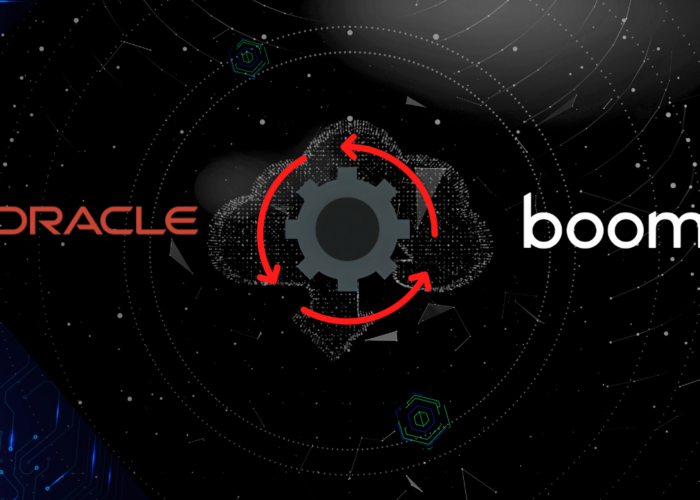Businesses possess many hardware and software components originating from different sources that are not inherently designed to interconnect perfectly. However, as cloud-based and service-oriented models gain prominence, the imperative for cohesive system collaboration becomes evident. That’s when the concept of middleware emerges as a key solution.
Middleware plays a crucial role, acting as a bridge between diverse applications and systems. This article aims to clarify what middleware is, explore its functionalities and shed light on its importance in the field of information technology.
What is Middleware?
Middleware is essentially software that facilitates communication and data exchange between different applications, systems, or databases. Acting as a mediator, middleware ensures seamless integration and connectivity, enabling disparate components to work together cohesively. This includes integrating the unique functionalities and features of each application into a cohesive ecosystem.
It plays a transformative role in navigating the complex web of digital components, ensuring they communicate harmoniously to meet the demands of modern businesses and their evolving technological scenery.
The following article may be of interest to you: ESB vs Middleware: What’s the difference?
How does Middleware work?
Middleware operates by providing a layer of abstraction between various software components, shielding them from the underlying complexities. Through standardized communication protocols, middleware allows applications to exchange data and requests without the need for direct integration. This indirect communication simplifies the development process, making it more flexible and scalable.
Its capabilities go beyond simple language translation, covering a range of different facets:
Integrating Distributed Components
An application comprises numerous interconnected elements scattered across distributed locations. Middleware plays a crucial role in weaving these disparate parts together, creating a seamless experience for users who can operate the service from a centralized entry point.
Fostering System Integration
Enterprises often consist of diverse hardware, operating systems, and communication protocols. Middleware serves as the catalyst that enables these disparate systems to collaborate harmoniously, effectively concealing their inherent differences.
Establishing Uniform Standards
Middleware provides developers with a high-level, uniform standard—a robust guideline that simplifies the application-building process. This consistency streamlines development efforts, enhancing efficiency and reducing complexity.
Creating a Common Framework
Beyond eliminating redundancy, middleware acts as a unifying force by fostering interoperability between applications. It achieves this by establishing a common framework for general functionalities, minimizing complexities and promoting smooth collaboration.
Armed with a deeper understanding of middleware and its functioning, let’s explore its fundamental features.
The following article may be of interest to you: Decision criteria to select an integration middleware
7 Key Functionalities of Middleware
As we have already seen, middleware is a critical component in the field of software development and system architecture. It plays a vital role in improving the efficiency, scalability, and interoperability of systems by providing a set of standardized services and functionalities. But let’s have a look into some of the key functionalities of middleware:
1. Data Transformation and Formatting
Middleware often includes features for transforming and formatting data to ensure that it conforms to the requirements of the receiving application or system. This functionality is essential for overcoming data format mismatches between communicating entities.
2. Transaction Management
Middleware facilitates transaction management by ensuring that transactions between different systems or components are executed in a coordinated and reliable manner. It helps maintain data consistency and integrity across distributed systems.
3. Security and Authentication
Middleware provides security mechanisms to safeguard data and communication channels. It often includes features such as encryption, authentication, and authorization to ensure that only authorized entities can access and manipulate the shared resources.
4. Load Balancing
In distributed systems, middleware may offer load balancing capabilities to evenly distribute workloads across multiple servers or components. This helps optimize resource utilization and improves system performance.
5. Event Handling and Notification
Middleware often supports event-driven architectures by providing mechanisms for handling events and notifying interested parties about changes or specific occurrences. This is important for real-time systems and applications.
6. Caching and Data Replication
Middleware can incorporate caching mechanisms to store frequently accessed data locally, reducing the need to fetch it from remote sources repeatedly. Additionally, it may support data replication to improve fault tolerance and enhance system reliability.
7. Monitoring and Logging
Middleware often includes monitoring and logging functionalities to track system performance, detect anomalies, and assist debugging. This is crucial for maintaining and troubleshooting distributed systems.
Middleware serves as a versatile layer that adds a level of abstraction, allowing disparate systems to work together. Its functionalities are diverse and cater to the challenges posed by distributed, heterogeneous, and complex software environments.
Why is middleware important to cloud computing?
Middleware plays a crucial role in cloud computing for several reasons:
Integration
Middleware serves as a bridge between various components and services in cloud computing environments. It enables perfect integration of diverse applications, platforms, and systems, regardless of differences in languages, protocols, or interfaces. This integration is essential for creating unified and interoperable cloud solutions.
Scalability
Cloud environments need to be highly scalable to accommodate fluctuating workloads and user demands. Middleware provides mechanisms for dynamically scaling resources, such as load balancing, clustering, and distributed computing frameworks. It allows applications to scale up or down automatically based on demand, ensuring optimal performance and resource utilization.
Flexibility
Middleware abstracts the underlying complexities of cloud infrastructure and services, providing developers with a flexible and adaptable development environment. It simplifies the process of deploying, managing, and updating applications in the cloud, allowing developers to focus on building and improving core functionalities rather than dealing with low-level infrastructure details.
Security
Security is a top priority in cloud computing due to the potential risks associated with storing and processing sensitive data in shared environments. Middleware offers security features and protocols to protect data, transactions, and communication channels across the cloud ecosystem. It provides authentication, authorization, encryption, and other security mechanisms to safeguard sensitive information and prevent unauthorized access or attacks.
Interoperability
Cloud computing environments often comprise a mix of heterogeneous technologies, platforms, and services from different vendors. Middleware facilitates interoperability by enabling seamless communication and interaction between diverse components and systems within the cloud ecosystem. It ensures that applications and services can work together efficiently, regardless of their underlying technologies or implementations.
Monitoring and Management
Middleware platforms typically include tools and frameworks for monitoring, managing, and analyzing the performance and health of cloud-based applications and services. These monitoring and management capabilities help administrators and operators identify issues, optimize resource utilization, troubleshoot problems, and ensure high availability and reliability of cloud infrastructures and services.
As we can see, it plays a critical role in enabling the perfect integration, scalability, flexibility, security, interoperability, and management of cloud computing environments, making it essential for building and deploying robust and efficient cloud-based solutions.
Middleware: products and solutions
Middleware encompasses a wide range of products and solutions designed to facilitate communication, integration, and management within complex computing environments. Here’s a breakdown of some popular middleware products and solutions across various categories:
- Enterprise Service Bus (ESB): WSO2, Red Hat Fuse, Mule ESB andOracle Service Bus
- Message-Oriented Middleware (MOM): Apache ActiveMQ, RabbitMQ, IBM MQ (formerly IBM WebSphere MQ) and Kafka (not strictly MOM, but often used for message queuing).
- Application Servers: Apache Tomcat, Red Hat JBoss Enterprise Application Platform, IBM WebSphere Application Server and Oracle WebLogic Server.
- Integration Platforms: Boomi, SnapLogic, Talend Integration Platform, Informatica Intelligent Cloud Services and Workato.
- API Management: WSO2, Gravitee, Microsoft Azure API Managemen, Apigee (Google Cloud), MuleSoft Anypoint Platform, IBM API Connect and Kong API Gateway.
- Business Process Management (BPM): IBM Business Process Manager and Camunda.
- Cloud-Native Applications: Kubernetes (container orchestration), OpenShift (Red Hat‘s Kubernetes platform) and AWS App Mesh (Amazon’s service mesh).
- Monitoring and Management: Prometheus, Grafana, Dynatrace, Anka and New Relic.
The choice of middleware depends on various factors such as the specific requirements of the application, the complexity of the integration, scalability needs, budget constraints, and the existing technology stack within an organization.
Conclusion
Middleware is a pivotal component in the framework of modern computing. Its ability to facilitate communication, improve interoperability, manage transactions, ensure security and support scalability makes it an indispensable part of contemporary IT architectures. The importance of middleware in creating cohesive, efficient, and interconnected systems cannot be overstated. As technology continues to change, middleware will remain a silent yet essential force, enabling the perfect functionality of the applications and systems we rely on daily.
Our team of experienced professionals can provide tailored solutions to ensure a great experience. Contact us today, and let one of our experts guide you through the process, and discover the full potential of it for your business.


Talk to our experts!
Contact our team and discover the cutting-edge technologies that will empower your business.
contact us





